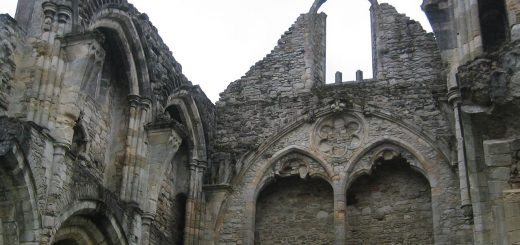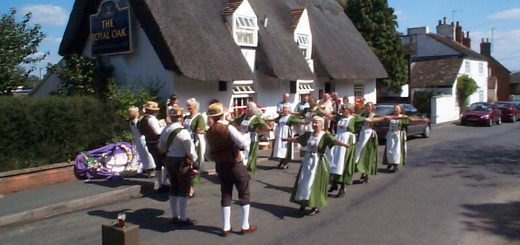Stowell Park
The Stowell Park Estate is a private agricultural and sporting estate owned by the Vestey family. The following account of a encounter with an apparition appeared in ‘The Haunted Homes and Family Traditions of Great Britain by John Ingram (1897)’. Though the account does not refer to Stowell Park by name, rather as Chedworth, the ‘seat of Lord Chedworth’. Stowell Park was the ancestral seat of the Baron’s of Chedworth until the last one died in 1804.
‘According to an anecdote related by Mrs.Crawford, in the Metropolitan Magazine for 1836, Chedworth, the seat of Lord Chedworth, in Gloucestershire, has not escaped the fate common to the residences of most noble families; that is to say, it has a story of an apparition attached to it. The account of this circumstance is stated to have been told to Mrs. Crawford by Miss Wright, the adopted child of Lord Chedworth, and daughter of a sister of his. The story, as told by his niece, was, that Lord Chedworth had great doubts as to the existence of the soul in another world, doubts which were equally shared by a gentleman for whom he had a very great friendship.
One morning Miss Wright remarked, when her uncle joined her at the breakfast-table, that he was very thoughtful, had no appetite, and was unusually silent.
“I had a strange visitor last night. My old friend B came to me.”
“What!” said Miss Wright, “did he come after I went to bed?”
“His spirit did” said Lord Chedworth, solemnly.
“Oh, my dear uncle! How could the spirit of a living man appear?” said she, smiling.
“He is dead, beyond doubt,” replied his Lordship; “listen, and then laugh as much as you please. I had not entered my bedroom many minutes when he stood before me. Like you, I could not believe but that I was looking on the living man, and so accosted him; but he (the spirit) answered, ‘Chedworth, I died this night at eight o’clock. I came to tell you there is another world beyond the grave; there is a righteous God that judgeth all!”
“Depend upon it, uncle, it was only a dream; “but even as Miss Wright was still speaking, a groom on horseback rode up the avenue, and immediately afterwards delivered a letter to Lord Chedworth, announcing the sudden death of his friend.’
The parish of Stowell passed into the Howe family around 1689 when John Grubham Howe (Died 1722), Member of Parliament for Cirencester, bought it from the Earl of Stafford. His son, John Howe was created the first Baron Chedworth in 1741. John Howe died on 3 April 1742 and was succeeded by his son John Thynne Howe, 2nd Baron Chedworth. John Thynne Howe was married to Martha Parker-a-Morley-Long, but they had no children, so when 2nd Baron Chedworth died in 1762, his brother, Henry Frederick Howe inherited the title and becoming 3rd Baron Chedworth. Henry, also had no children, so the title and estates passed in 1781 to his nephew John Howe (Born 1754 – Died 1804) the fourth and last Baron Chedworth. 4th Baron Chedworth spent little time in his Gloucester estate (in fact he had the household goods sold in 1782) and had no sisters, so the Lord Chedworth from the above account must have been one of the brothers, John Thynne Howe or Henry Frederick Howe who had three sisters.
Stowell was sold in 1812 to Sir William Scott, Member of Parliament for Oxford University and in 1821 created Lord Stowell. It stayed in the family until 1923 when it was sold to Hon. Samuel Vestey in who’s family it remained. During World War II Stowell Park was occupied by the US 58th General Hospital unit and later the 160th General Hospital unit. In 1948 a secondary modern boarding school was opened in the camp at Stowell Park for displaced Polish girls. One account of time spent at the school refers to a school ghost in a large white hat referred to as ‘kapelusznik’ (the hatter).





Recent Comments